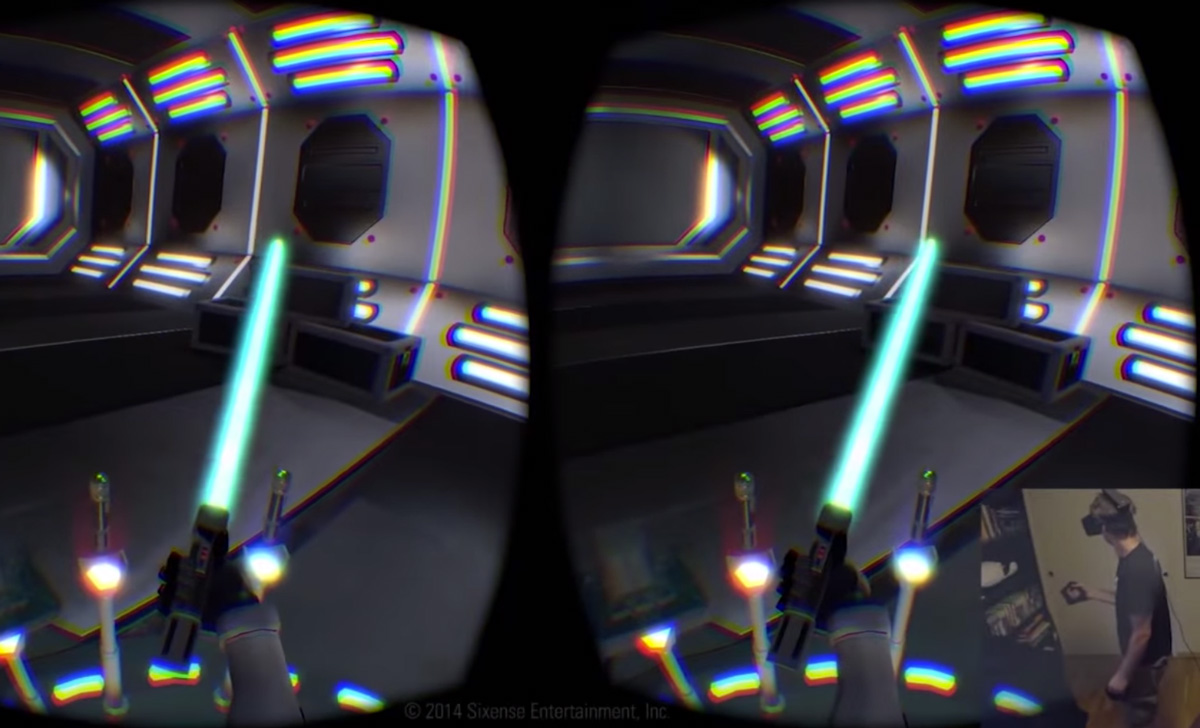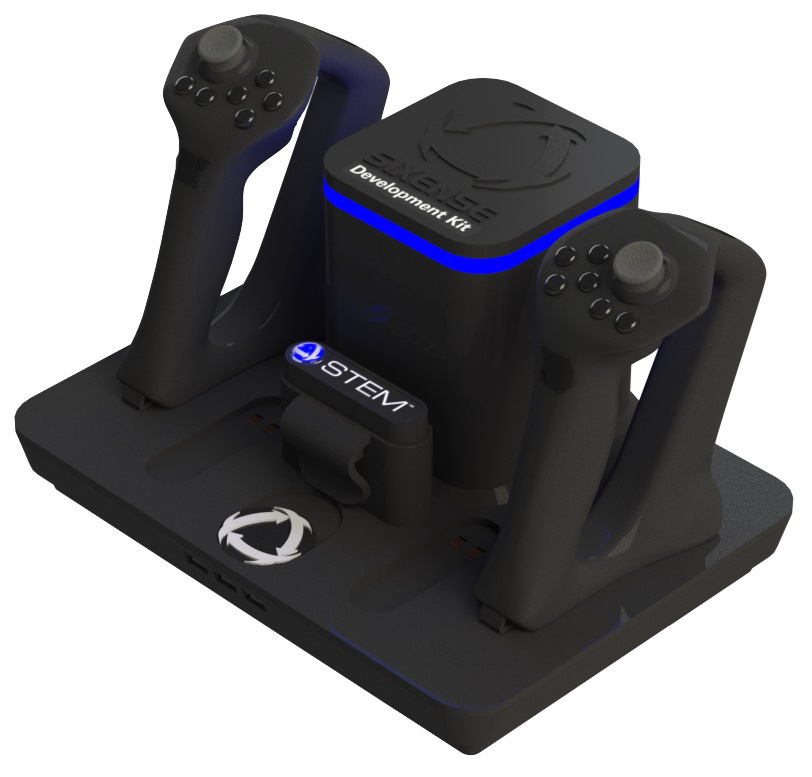The STEM virtual reality device created by Sixense, including their never to see the light of day Lightsaber Simulator, was a big hit at the 2015 Consumer Electronics Show in Las Vegas. The VR accessory was chosen as the best VR tech of CES 2015 by technology and culture siteThe Verge, and Best Virtual Reality Experience from Tom’s Hardware. The software and hardware developer also wowed with their virtual reality shopping application,vRetail.
The technology in STEM – Sixense Tracking Embedded Module – uses motion tracking with electromagnetic fields, as opposed to the camera-based motion tracking that many other entries in the VR market use. A base station emits a field with an eight-foot radius that keeps track of two handheld controllers and an attachment for a VR headset, allowing precise positioning without requiring a direct line of sight. To show off what the technology can do, the Sixense team developed an unlicensed “Lightsaber” simulator that select CES visitors were allowed to try out.
In their 2015 CES Verge Awards, the site called the technology, and the Lightsaber simulator “a healthy marriage between immersive virtual reality video, decent motion controls, and a great game idea,” before crowing it Best VR. Although they do point out that it is still the early days for virtual reality, and the emergent technology still has quite a ways to go.You can check out The Verge’s review of STEM and a video of the Lightsaber simulator in action here:
The Verge’s praise was echoed by Tom’s Hardware, who named STEM Best Virtual Reality Experience and said that the simulator left them awestruck: “[W]hen it comes to the STEM we feel that the hardware is accurate and practical enough to be usable by a consumer. We haven’t seen anything else that is there yet. Now we just need to wait for the game community to deliver content that takes advantage of it… and, of course, for Oculus to deliver its Rift to market.”
We are still a few years away from a realistic market for virtual reality technology, but the STEM device is still very exciting. Not only can the technology be used to develop 3D modeling software, as it already has, but it also can be adapted for virtual shopping. With the vRetail applications, Sixense STEM technology allows users to experience products without having to move through a crowded store. It’s possible that units can easily be installed in malls and shopping centers, allowing customers to browse through products that are not currently in stock at that location, or even entire lines of products that can only be purchased virtually.
Currently the STEM hardware is available for pre-order as a development kit for $380. In my opinion, though, consumers are less likely to purchase it and, instead, it is more likely that the technology will find its way incorporated into consumer electronics that license it from Sixense.





